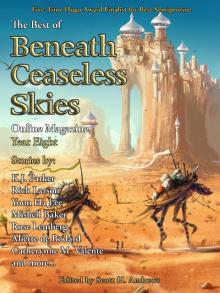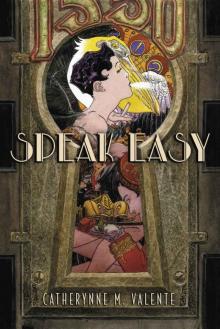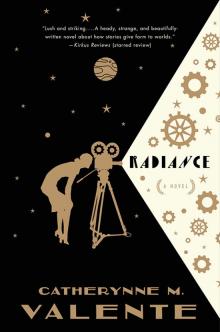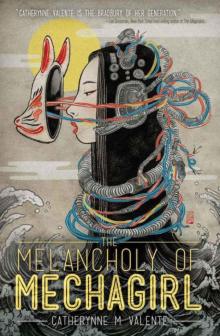


Cairo
Max Rodenbeck
Hadst thou but seen thy knights trodden under horses’ hooves, thy palaces invaded and ransacked for booty, thy ladies bought and sold at four to the dinar of thine own money! Hadst thou seen thy churches demolished, the crosses sawn in sunder, thy garbled gospels hawked about before the sun, the tombs of thy nobles cast to the ground…then thou wouldst have said, “Would God that I were dust!”…This letter holds happy tidings. It tells thee that God watches over thee to prolong thy days, inasmuch as thou wert not in Antioch!
When the tally of two centuries of war was counted, Cairo had reason to sound triumphant. All its trading rivals had been eliminated: Baghdad and Damascus had been sacked by the Mongols; Christian Antioch, Tyre, and Acre by the Muslims; Constantinople by Crusaders who had double-crossed their erstwhile Christian ally, the Byzantine emperor. Cairo was the capital of the strongest military power of the age. Not only did its Turkish-speaking rulers control the holy cities of Mecca, Medina, and Jerusalem, they also held personal title to all the rich agricultural land of Egypt. For two and a half centuries their revolving fiefdoms siphoned all the wealth of the country into the capital.
In the brief half-century respite before the great plague struck in 1347, the city flourished as never before. Its area nearly doubled during the reign of Sultan al-Nasir Muhammad ibn Qalawun (which, with two brief interruptions, lasted from 1293 to 1341, making him the longest-ruling Mameluke sultan). A building boom transformed the vast open ground between the Citadel and Bab Zuwayla into a densely peopled quarter. In the western and southern suburbs Mameluke officers built palaces; in the city center, mosques and colleges; in the cemeteries, magnificent tombs.
Yet, for all its splendor, victorious Cairo had ultimately lost out. The two centuries of nonstop warfare sparked by the Crusades had caused inevitable change. Merchants had lost their prestige to soldiers. Tolerance and a cosmopolitan outlook had given way to narrow-mindedness. The nature of government had turned predatory. The Mameluke lords who now owned Egypt had no attachments to its future or to its past; no loyalty except to their own class. The country was simply there to be exploited.
In Europe, by contrast, the ruling nobility retained their link to the land. When it prospered, they prospered. The political divisions that kept them weak also fostered keen competition in trade and industry and technology. Moreover, Europe had just received a healthy injection of new ideas. The Crusaders may have been booted out of Palestine, but they gained immeasurably from contact with the civilized East. Europe learned from the Arabs the arts of papermaking, of navigation by compass, of the use of watermills, of glass and crystal manufacture, of ceramics and dyes, of the uses of soap and perfume. A trader from Pisa, Leonardo Fibonacci, introduced Arabic numerals to Italy after a visit to Egypt in the twelfth century. Architects from Amalfi copied the pointed vaults and arches they had seen in Fatimid Cairo; the Gothic style they inspired took Europe by storm. Others brought back the principles of Greek medicine and chemistry that Europe had forgotten but that the Arabs had translated, practiced, and improved on.
From Muslim armies Europe picked up the trappings of advanced warfare: the stirrup, the crossbow and the recurved composite bow, the mangonel, the combustible missile, and the pomp of kettledrums and tournaments, uniforms, and heraldic signs such as the fleur-de-lis, the double-headed eagle, and Baybars’s own seal of the lion rampant (“Baybars” meaning “Lord Lion” in Turkish). They adopted the Mameluke pastime of playing cards, transforming the hierarchical symbolism of the sultan’s court: the mallet of the jukandār or polomaster was shortened and rounded into clover-shaped clubs; the napkin of the ustadar or chief steward was preserved as diamonds; the nai’b or deputy became the knave. The Europeans learned to train homing pigeons, a sport the Fatimids had so perfected that when the Caliph al-Aziz (A.D. 975–96) had expressed a wish to eat cherries, which did not grow in Egypt, his wazir could present him with a full bowl the following morning: informed of the command by pigeon post, the governor of Lebanon had clusters of the berries tied to the feet of flocks of doves, who flew their sweet cargo by relays the whole 400 miles to Cairo.
From consumers of luxuries the Europeans grew to be producers. By the fifteenth century the balance of Mediterranean trade had shifted firmly in their favor. Europe still imported spices, dyes, precious stones, and other primary goods, enriching Cairo’s merchant classes and the state that taxed them. But the best manufactures were now made on the northern shore of the sea. The soap of Marseilles, the paper of Fabriano, and the glass of Murano outclassed and undersold their Arab models. Renaissance inventiveness perfected technologies such as the watermill and the treadle loom, then guarded its advances with secrecy and patents. Meanwhile Egypt’s main industry, textiles, sank into decline. During the lifetime of al-Maqrizi—the historian died in 1442—Cairenes were to switch from wearing fine Egyptian linen to cheap European cloth. Imports affected other industries in the same way. The number of sugar mills at Fustat, for instance, dropped from sixty-six in 1325 to nineteen in 1400.
In many ways it was the very success of the Mameluke sultanate that pushed Europe to overtake it. In the fourteenth and fifteenth centuries Cairo exercised a near monopoly of trade to the Indies. Its rulers, ever fearful of palace intrigue, ever pressed for money to buy and maintain new generations of slave soldiers, clamped increasingly crippling duties on commerce. By one sultan’s decree in the 1430s, for instance, the price to European traders for a load of pepper—bought in India for two dinars and exchanged at Mecca for ten—was to be no less than eighty dinars. “Because this city is situated where she is,” complained one Venetian of Cairo, “merchants cannot do else than come there and allow themselves to be devoured as the Soldan and his officials wish.”
In time, Europeans found they could do otherwise. Aside from beginning to manufacture their own goods, they sought new trade routes. By the end of the fifteenth century Iberian sailors—having improved the performance of their square-riggers by adding lateen sails copied from the Arabs—had discovered the New World and rounded the Cape of Good Hope. Portuguese marauders harried traffic even in the Red Sea, which Cairo’s rulers of the past 500 years had seen as an Egyptian lake. These upstart challengers, moreover, were armed with guns—heavy weapons that the proud Mameluke horsemen could not wield from the saddle and refused to lug around on foot.
EVEN AS THE Mameluke amirs of the fourteenth and fifteenth centuries competed to embellish their capital, its spirit had changed. War, disease, and the state’s shortsighted manipulations hardened attitudes. It was the martially minded Mamelukes who herded their womenfolk into harems and insisted on the veil. It was the slave soldiers who built Cairo’s notorious twin prisons, the Sweater and the Peeler (so named, presumably, for the unpleasant symptoms that incarceration in them induced). The Mamelukes devised such ghastly forms of public execution as crucifixion on crosses strapped to camels’ backs—followed by a parade of the naked victim through the city—and bisection at the waist, and impalement on a greased pole. Under their rule Jewish and Christian ghettos developed for the first time: to keep the masses under heel, the Mamelukes encouraged and abetted religious bigotry.
In 1442, for instance, a Cairo mob marched to the foot of the Citadel. Someone had reported that a plank in the wooden pulpit of a synagogue was inscribed with the name of Muhammad. To appease the rabble, the sultan had three rabbis tortured to confess who among them had profaned the Prophet by treading on his name. Two of them died, and the third converted to Islam.
Touchiness about such matters had earlier been raised by Sultan ah Mu’ayyad Sheikh. Toward the end of his reign (which lasted from 1412 to 1421) he decreed that Muslim preachers should descend one step on their pulpits before mentioning the ruler’s name, so as to ensure it would not be uttered on the same level as God’s. The pious gesture greatly boosted ah Mu’ayyad’s popularity. He needed the plaudits, because it was widely known that his drinking habit had led to severe bouts of gout. (Al-Mu’ayyad had, moreover, a scandalous taste
for handsome young Mamelukes. He was said to have raged on hearing that one of his amirs had paid 1,000 dinars to spend time in the company of a particularly delectable royal cup-bearer. But he forgave the dalliance when the amir joked that if the boy had not been ah Mu’ayyad’s own property, the sultan himself would have paid 10,000. The amir was lucky: Al-Mu’ayyad had some eighty of his amirs executed for other slights.)
Mameluke rule was generally harder on Coptic Christians than on Cairo’s small Jewish minority. When al-Mu’ayyad banned Copts from government service, he was not the first sultan to do so. Earlier prohibitions had always been weakened, however, given the need for the Copts’ famed financial acumen. Al-Mu’ayyad’s enforcement was unsubtle: he had his highest-ranking Coptic scribe stripped naked and paraded through the streets. So ended common spectacles that the contemporary historian Ibn Taghribirdi described as unseemly, such as Muslims being obliged to stand before a seated Christian official, or to walk beside a mounted Christian. No longer would supplicants have to kiss the hem of some powerful Nazarene’s garment. From now on, the Christians “decreased the size of their turbans and the width of their sleeves.” Our witness found this greatly to the sultan’s credit. “Perhaps God will forgive all of al-Mu’ayyad’s sins, for it was one of the greatest measures for the supremacy of Islam” was Ibn Taghribirdi’s approving comment.
It was strange that al-Mu’ayyad should have felt any need to suppress the Copts. The previous century had already seen the definitive eclipse of Christianity in Egypt. Until then this had been the religion professed by most of the country’s people, especially outside the capital. Starting in 1293, however, repeated riots led to waves of conversions. In 1301 a dignitary visiting from Morocco, where resentment at the ongoing Christian reconquest of Spain was intense, expressed outrage at the liberties allowed to infidels in Cairo. Ashamed, the Mameluke governor of the city enforced the long-forgotten dress code. Any Christian or Jew who did not wear a blue or yellow identifying turban, he declared, could be lawfully plundered by the Muslims. In 1321 eleven churches in Cairo were burned to the ground, and in 1354 four more. The sultan confiscated church property, banned even Christian converts to Islam from state employment, and had soldiers destroy the most famous relic of Fustat, a Christian martyr’s preserved finger that was annually dipped in the Nile to provoke the flood. “When the Christians’ afflictions grew great and their income small, they decided to embrace Islam,” wrote al-Maqrizi. “It was a momentous event in Egyptian history. From that time on, lineages became mixed.” In other words, the Copts were reduced to their present proportion of under a tenth of the population.
The change was profound. By the end of the Mameluke sultanate no upright Muslim, not even an aristocratic man of letters like the historian Ibn Taghribirdi, would have thought fit to engage in philosophical debate with an infidel. A great horseman and a famed wit, Ibn Taghribirdi was also one of Cairo’s most distinguished literati, an authority on court etiquette and a talented translator of Turkish and Persian poetry. Yet not only did he positively gloat over persecution of the infidel, in his time the very word “philosophy” was a term of abuse. To philosophize, in fifteenth-century Cairo, meant to engage in prattle.
By contrast, a gentleman of the twelfth century such as Abd al-Latif of Baghdad would have taken pleasure in discussing Plato with the chief rabbi of Cairo. Indeed, the doctor described Maimonides as a scholar of very superior merit. By some contemporary accounts, his original purpose in traveling to Cairo was to have the pleasure of hearing the Jewish sage lecture.
A century before that encounter, the Fatimid court physician Ibn Ridwan had respectfully dedicated several of his hundred-odd scientific works to a Jewish colleague, Yahuda ibn Sa‘ada. Ibn Ridwan personified the upward mobility that learning conferred in that liberal age. Born the son of a humble Giza baker, he had financed his studies by selling horoscopes. Having prospered as a doctor, he delighted in scouring the book markets of Fustat and Cairo. By his own account Ibn Ridwan’s private library contained all but twelve of the fifty-five known works of Hippocrates, as well as Dioscorides’ Book of Herbs and the books of Rufus of Ephesus, Oribasius, and Paul of Aegina, as well as the Comprehensive Book of the ninth-century Arab physician Abu Bakr al-Razi, who asserted the primacy of human reason in all affairs. Ibn Ridwan owned scientific texts such as the Almagest and the Quadripartia of Ptolemy, as well as the philosophical works of Plato, Aristotle, Alexander of Aphrodisias, Themistius, and Muhammad al-Farabi, a fellow Muslim who daringly hinted that religion merely served those who needed its symbols to grasp the truths revealed by philosophers.
Ibn Ridwan would have had access to the imperial library established by the Fatimid wazir Ibn Killis, a converted Jew whose organizational genius laid the foundations of the Fatimid state. Among 100,000 books, the library was said to contain 18,000 manuscripts on the sciences of antiquity. Even the Fatimid caliph al-Hakim (996–1021), who was widely thought to be insane, patronized learning. He endowed Cairo with an astronomical observatory and a scientific institute known as the House of Wisdom. There polymaths such as Ibn Haytham, whose treatise on optics was the first to describe the camera obscura, and scientists such as Ammar ibn Ali, who devised novel treatments for eye diseases, received state grants for their research. (Ibn Haytham, however, was obliged to feign madness for several years because his capricious patron blamed him for failing to come up with a scheme to dam the Nile.)
Intellectuals of the Fatimid era held impassioned debates. Ibn Haytham exchanged theories on the nature of the Milky Way with Ibn Ridwan, who himself was locked in a fierce, decade-long scientific dispute with a Christian physician named Ibn Butlan. The latter mercilessly taunted his colleague over his supposed arrogance and ugliness. This little verse he penned drew titters in all the salons of Fatimid Cairo and Fustat:
When they saw his face
The midwives swooned.
Alas! They moaned,
Had we but left him in the womb.
Seven centuries separated Ibn Ridwan from the arrival of Napoleon in 1798. Curious as to how Cairene intellectuals diverted themselves, an Arabist in the French expedition compiled an inventory of one Azharite scholar’s library. The list spoke volumes about the decline in intellectual standards. The only nonreligious works he owned were a treatise on love, an anthology of songs and poems, a book of historical curiosities, a sex manual, formulas for marriage and divorce contracts, and models of epistolary style. There were no printed works. Although Arabs had practiced wood-block printing as early as the ninth century—600 years before Gutenberg—the science had died out. And, even though they knew of Europe’s advance to movable type, Cairo’s literate class had shunned the invention for fear its use might challenge their practical monopoly of the written word.*2
LATER ARABS lionized Saladin for defeating the Crusaders and uprooting what was regarded as Shi‘ite heresy. His introduction of theological schools did succeed in reimposing Sunnism, but at the cost of restricting free inquiry. When it came to pass that the only education Cairo had to offer was religious, intellectual life withered. Plato was forgotten. The hereafter came to outweigh the here and now. Those scholars who did not succumb to Sufi mysticism sought perfection of form, of comportment, not perfection of the mind. Debate about the correct Islamic manner of washing, or eating, or over questions like whether a woman need perform ritual ablutions after a visitation by jinns, replaced philosophical conjecture and scientific invention.
Not even a sage such as Abd al-Rahman Ibn Khaldun, the brightest star of Islam’s fading intellectual firmament, dared to challenge the religious conventions of his age. Before his arrival in Cairo at the end of the fourteenth century this man’s extraordinary career had already taken him into distinguished service at the courts of the Arab West. Fate had sent him into the dungeons of Fez and dispatched him as ambassador from King Muhammad V of Granada to Dom Pedro the Cruel of Seville. That Christian monarch had been so charmed that he offered to return Ibn Khaldun’s l
ong-lost family estates in Spain. But the scholar had tired of politics, and instead retreated with his books to the mountain redoubt of an Algerian Berber tribe. During this four-year private hejira he composed his magisterial Prolegomena, a penetrating inquiry into the nature of history that described the efflorescence and decay of civilizations in terms of inevitable cycles. The scope and sophistication of this work made Machiavelli’s The Prince, written a hundred years later, appear shallow and amateurish by comparison.
Ibn Khaldun set out on the pilgrimage in 1382. Shortly after landing at Cairo he learned that his wife and daughter, who were to follow him to Mecca, had drowned in a storm off Alexandria. Grief-stricken, he opted to stay in the Mameluke capital. Here he lived for the last quarter century of his life. When in favor with the sultan he served as a stern and respected judge: such was the ease of access to position that a learned man enjoyed in medieval Islam. He also lectured at some of Cairo’s most prestigious colleges: at al-Azhar, at the Qamhiyya madrasa founded by Saladin, at the madrasa of the amir Sarghatmish, and at the dervish monastery of the amir Baybars al-Gashnakir.
He was a gifted teacher. His novel theories on the psychology of power—on its rise through the strength of tribal solidarity and its decline through decadence—and on economics, metaphysics, and pedagogy deeply impressed his students. One of these was al-Maqrizi. Cairo’s preeminent chronicler considered Ibn Khaldun’s Prolegomena to be the cream of all knowledge. Of its style, he said it was “more brilliant than a perfect pearl and finer than water fanned by a zephyr.” Later judges were equally impressed. The British historian Arnold Toynbee reckoned the Prolegomena the greatest work of its kind ever created in any time or place.














